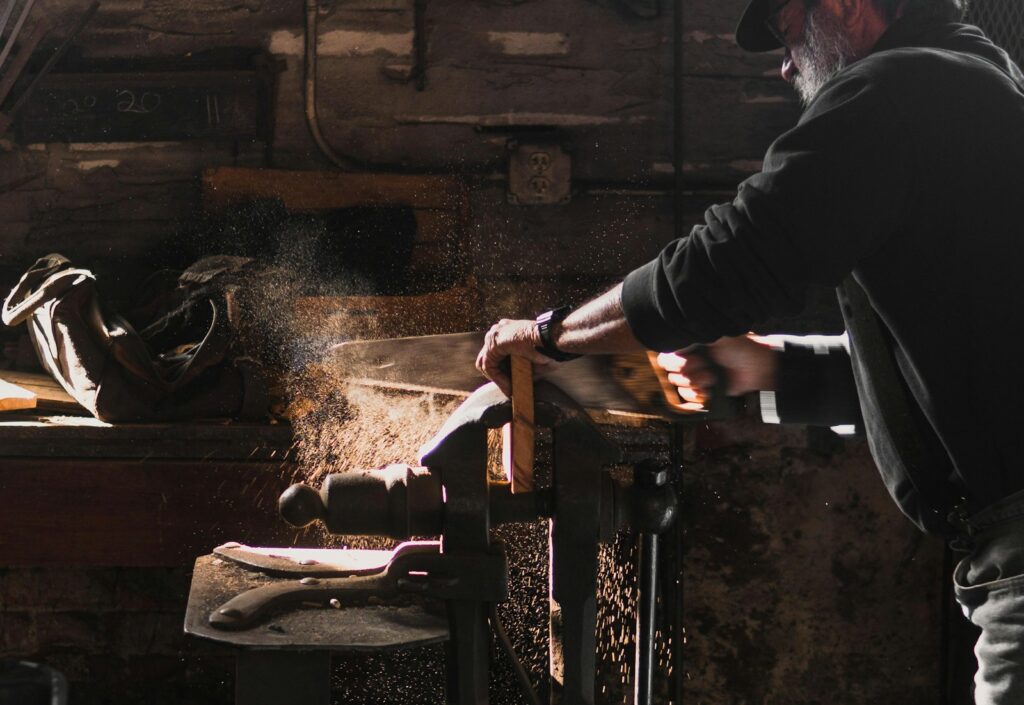The Future of Woodworking: 2025 Trends Shaping the Craft
Woodworking has always been a blend of tradition and innovation, but as we step into 2025, the craft is evolving faster than ever. From AI-assisted design to eco-conscious materials, the tools, techniques, and philosophies driving woodworking are reshaping how we create. Whether you’re a hobbyist or a seasoned pro, here’s what’s trending in 2025—and how you can stay ahead of the curve.
1. AI-powered design Tools
Gone are the days of sketching plans solely by hand. In 2025, AI-driven software like CarpenterAI and WoodCraft Pro are revolutionizing project planning. These tools analyze your material inventory, suggest efficient cuts to minimize waste, and even generate 3D renderings of your design. Some programs even predict structural weaknesses or recommend joinery techniques based on your skill level.
Pro Tip: Start experimenting with free AI design platforms like SketchUp Fusion or AutoCAD’s Woodworking Module to streamline your workflow.
2. Sustainable Craftsmanship Takes Center Stage
Eco-conscious woodworking is no longer a niche—it’s a necessity. In 2025, demand for FSC-certified reclaimed wood and carbon-neutral lumber is skyrocketing. Meanwhile, “urban harvesting” (salvaging wood from demolished buildings) is gaining traction. Brands like TimberRevive now sell pre-processed reclaimed wood planks with embedded RFID chips that trace the material’s origin, ensuring ethical sourcing.
Try This: Partner with local demolition companies to source reclaimed materials or experiment with hemp-based composite boards for smaller projects.
3. Smart Tools & IoT Integration
Your workshop is getting smarter. IoT-enabled tools, such as saws that auto-adjust blade speed based on wood density or routers that sync with AR guides, are reducing errors and boosting precision. The Festool Connect System, for example, lets you monitor tool battery levels, track cut histories, and share settings across devices via a single app.
Hot Tool Alert: The DeWalt XR 2025 Smart Drill uses haptic feedback to warn you about over-torquing screws—perfect for delicate finishes.
4. Hybrid Workshops: Old Meets New
While tech advances, traditional hand tools are making a comeback—with a twist. Many woodworkers are blending vintage techniques with modern tech, like using hand-carved details on CNC-cut furniture. Hybrid workshops now feature “tech-free zones” for hand planing and dovetailing, paired with 3D printers for custom hardware.
Project Idea: Build a Shaker-style table with CNC-milled legs and hand-finished chamfers for a timeless-meets-modern look.
5. Bio-Based Finishes & Materials
2025 is the year of non-toxic, plant-based finishes. Walnut oil blends and mushroom-derived sealants (like MycoSeal) are replacing chemical lacquers. Even adhesives are going green: EcoBond’s algae-based glue is water resistant and stronger than traditional PVA.
Eco Hack: Mix your own natural finish using beeswax, linseed oil, and citrus solvent for a customizable, low-VOC solution.
6. Modular & Space-Saving Designs
With urban living spaces shrinking, modular furniture is in high demand. Think wall beds with integrated shelving, expandable dining tables, and nesting stools that double as storage. 3D-printed connectors and foldable joints are enabling sleek, space-efficient designs without compromising strength.
Trend to Watch: Magnetic joinery systems (like MagJoint) allow users to reconfigure furniture without tools—ideal for renters.
7. Augmented Reality (AR) for Precision
AR glasses like Microsoft HoloLens 3 are becoming workshop staples. Visualize your project overlaid on raw lumber to plan cuts or follow step-by-step holographic guides for complex assemblies. Apps like WoodAR even let clients “see” custom pieces in their homes before they are built.
Starter Tip: Use your smartphone with free AR apps like AR Woodcraft to practice layout planning.
8. Collaborative Craftsmanship
The maker community is more connected than ever. Platforms like BuildShare let woodworkers crowdsource design solutions, while open-source plans for everything from garden sheds to acoustic guitars are thriving. Local “maker hubs” now offer shared CNC mills and laser cutters, lowering the barrier to high-tech tools.
Join In: Start a YouTube Live series showcasing your process or collaborate on a global project like the Open Source Farmhouse Table Initiative.
Conclusion: Embrace the Evolution
Woodworking in 2025 is about balancing innovation with integrity. While tech offers exciting shortcuts, the heart of the craft remains in patience, creativity, and respect for the material. As you explore these trends, remember: the best projects still start with a vision, a steady hand, and a love for the grain.
What’s Next? Share your 2025 woodworking experiments in the comments—or tag us on Instagram with your high-tech meets handcrafted creations!
Stay sawdusty, friends.
[Your Name/Blog Name]
P.S. Don’t forget to subscribe for our upcoming deep-dive into building a Solar-Powered Workshop in 2025!

